Craft & Clay
Since 1982, Orange Street Pottery has provided a space to mold creative visions to life
BY Emory Rakestraw
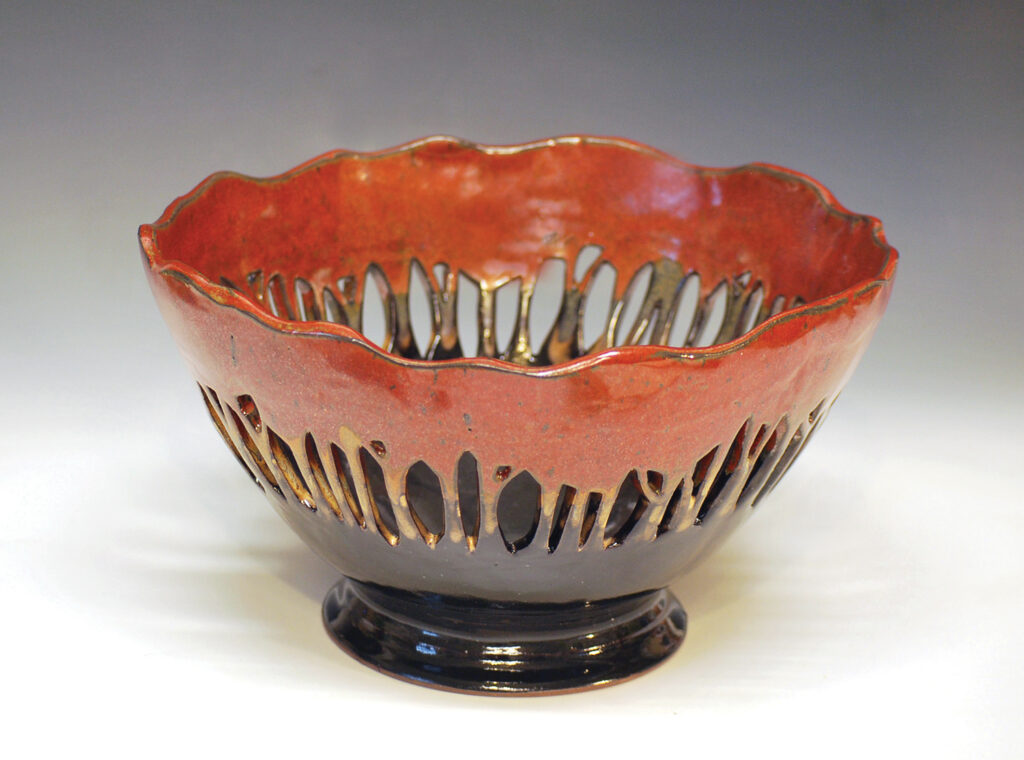
The workroom of Orange Street Pottery is filled with students sitting eagerly at the table, bringing form to their creative visions. With laser focus, some are wedging the clay, some are hand-throwing, and some are wondering, how do I make a vase?
Instructor and executive president Brian Evans guides each through the process. It’s a similar experience to the one he first encountered in 1995 under the guidance of Orange Street Pottery founder Hiroshi Sueyoshi.
“My goal here is to not teach a college curriculum class,” Evans says. “My goal is to help the students succeed. I want a beginner to come to a class, have fun, and go home with something tangible. Almost every project we make will turn out so that you have a finished piece to take home.”
Disciplines of study include Hand Building and Wheel Throwing, taught by Evans and Bev Haley; Wheel Throwing, taught by Steve Kelly and Jacob Herrmann; and Concentrated Hand Building, taught by Evans. Students can choose from morning, afternoon or night classes attended twice a week for seven weeks.
Students begin with the basics, then are taught how to incorporate them. All glazes are made in-house. If they’re seeking to create a box, mug, or even a lantern, Evans has a series of templates to start. A kiln and drying room provide hands-on experience around the chemistry (and magic) behind the process. Students interested in a pottery career can also learn how to load and unload the kiln.
“Orange Street Pottery is filled with wonderful teachers and students,” Haley says. “When I first went there and Hiroshi was there, we only had two little rooms. Today, we have so many students and it’s a wonderful social outlet. I think there’s a joy in creating something; students have no idea they can do anything with clay, and they come in here and are amazed at what they can create.”
A Post-Modern World
Brian Evans combines two forms to create futuristic objects
Picture yourself deep in the forest. You haven’t seen a sign of civilization for miles. There’s a strange quietness only interrupted by the sound of your own footsteps. Suddenly, you stumble upon a modern sculpture that is corroded and oxidized. It appears to be from the future but also the past.
The work of Brian Evans revolves around this tale and the idea of found objects. A balance of hand building and wheel throwing crafts futuristic creations that are anything but an average vase or pot. Sometimes the glaze is an accent, while in works like Neptune’s Palace it is the main character.
“In Neptune’s Palace, I thought I was going for one message, but it changed completely after the glaze. I added a mineral to the glaze to make it bubble, that was one of Hiroshi’s influences,” says Evans. “Hiroshi was a potter and sculptor; he was good at throwing and doing loose alterations. I take his teachings then go beyond that. I’m trying to think of the wheel as not a means of making an entire piece, but as a tool I can add to get to the end result.”
Evans studied sculpture in college. Later, a course with Dina Wilde-Ramsing introduced him to hand building and his first wheel throwing lesson. While his mind has since fought between the two, he’s learning a happy medium that he’s passing on to his students.
“I’m trying to look at things that don’t relate directly to clay to form new ideas. I taught a whole session on pots inspired by origami and did one inspired by fabric and leather objects,” Evans says. “I’ve always had multiple personalities when it comes to pottery. I’m trying to merge all of those together and form a cohesive whole. I’m just letting it happen and it’s starting to show in my work.”
A Bit of Whimsy
Bev Haley’s stoneware flips the rational world upside down
What if a cow sold milk? Or a cat — draped in a bonnet and clutching a purse of fish — decided to walk the dog? How can our world integrate into a fairytale? Bev Haley asks herself those questions when it comes time to create, “I’m not sure how it happened,” she says. “I started as a traditional potter. When I came back to it many years later, pottery had made leaps and bounds to a more whimsical interpretation. I created these forest ladies, then the next thing I thought of, a cow could be selling milk, that would be funny, or a cat walking a dog. These ideas seemed to make sense. Things just progressed and I’m now looking toward different ways to expand that same idea.”
Haley’s stoneware isn’t limited to forest ladies or milk-selling cows. Forest Bowl, a stoneware pot, features a traditional form coated in thick, dripped glaze. Gold House walks one into the forest where a textured birdhouse is built within the treetops. Inside, a blue bird sits in its nest. Haley enjoys straddling fiction and fact, letting her creations float within our world while flirting with a bit of fantasy.
When not crafting the otherworldly, she also creates raku pots influenced by Hiroshi. Raku is a Japanese form of pottery that includes bisque firing (fired before glaze) and a secondary fire that lets the glaze become liquid. This method creates crackled glaze surfaces, metallic effects, and black smoked unglazed clay. Haley’s raku pots maintain a bit of whimsy with Asian influences, textural details, and surface movement that evoke freedom.
She says Orange Street Pottery isn’t just about creation or education. Haley finds inspiration and encouragement in like minds and developing friendships.
A Brief History
Steve Kelly’s creations reflect the transition from student to teacher
After studying pottery in Montana, Steve Kelly apprenticed at Buckcreek Pottery in Nelson, Virginia. There, he immersed himself in the Japanese tradition of mingei.
“Philosopher Yanagi Sōetsu is the grandfather of this tradition,” he says. “Mingei states if you do something enough, the object you make will have an inherent presence that shows a knowledgeable hand. Sōetsu used this example of a rice bowl he found in Korea. It was made in these factories with not much thought, but there was this inherent beauty. It was perfect but not overly fussy. My apprenticeship and early works were very rooted in this. Yet, today, the pots I make don’t look very mingei.”
Kelly’s past and present works look to the natural world while taking a humble approach to the flexibility of clay. Bowls, teapots and dinner plates are glazed in a single, subtle color with his distinctive water-etching technique at the forefront.
“My work is very focused on form and surface. I use glaze to accentuate and talk about the surfaces,” says Kelly. “Water-etching came about from my fascination with typography. I looked at serifs and non-serifs and I’d get lost in the shapes as objects. I’ve always liked graffiti and I looked at the curves of those two things and was trying to create forms that alluded to that.”
Pottery is more than art for Kelly. It’s a means for forming a communal bond with fellow potters. His curriculum at Orange Street Pottery teaches students to see the flexibility of clay in its many different states. Much like how it can mold beyond the traditional steps of design, making and drying, Kelly has shaped his work as life progresses, seeking new inspiration to both educate and create.
Trial By Fire
Jacob Herrmann’s juxtaposition of past and current works follows the path of life
The psychedelic techniques and swirled fusion of multicolored clay of Jacob Herrmann’s current creations are vastly different from his previous and more understated bowls, drinkware and mugs.
“My work has shifted pretty dramatically,” he says. “The first 10 years of working with clay, it revolved around the wood-firing process. The work was meant to be direct, honest forms that were marked by the flame in the kiln and heavily influenced by process and tradition. In that way, the new work is similar yet inspired by agateware pottery and borosilicate glass art.”
His process involves layering and marbling different colors of clay to create mind-bending patterns that pack a bold punch. The process of formation is much slower but came about from a major (albeit happy) life change.
“Wood firing was my main interest, but since having a daughter it has changed,” says Herrmann. “A lot has changed, one being the amount of time I have to spend in the studio. Wood firing requires a lot of time inside and outside, prepping the wood and kiln. My work has evolved to working in colored porcelain. It’s still very process oriented, but it’s a much slower process and allows me to juggle working with clay, dad life and teaching.”
Herrmann teaches wheel throwing one night a week. He says Orange Street Pottery is more than a place to learn but lends a social environment for both students and teachers to connect and share their experiences.

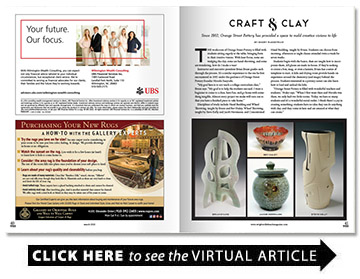
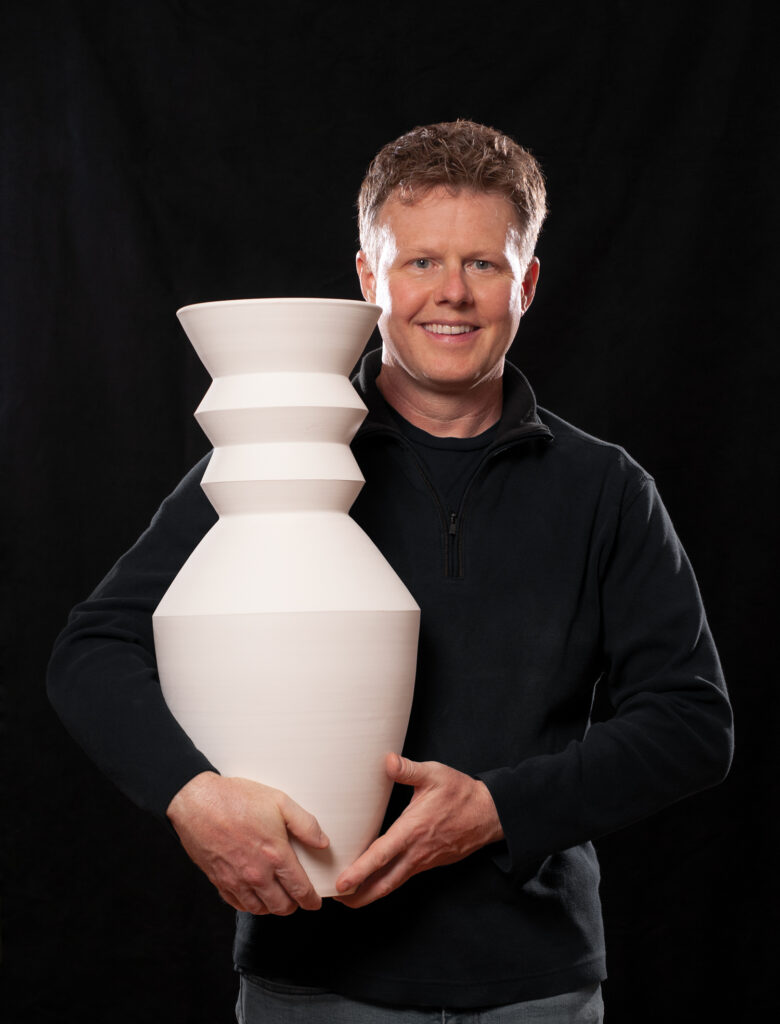
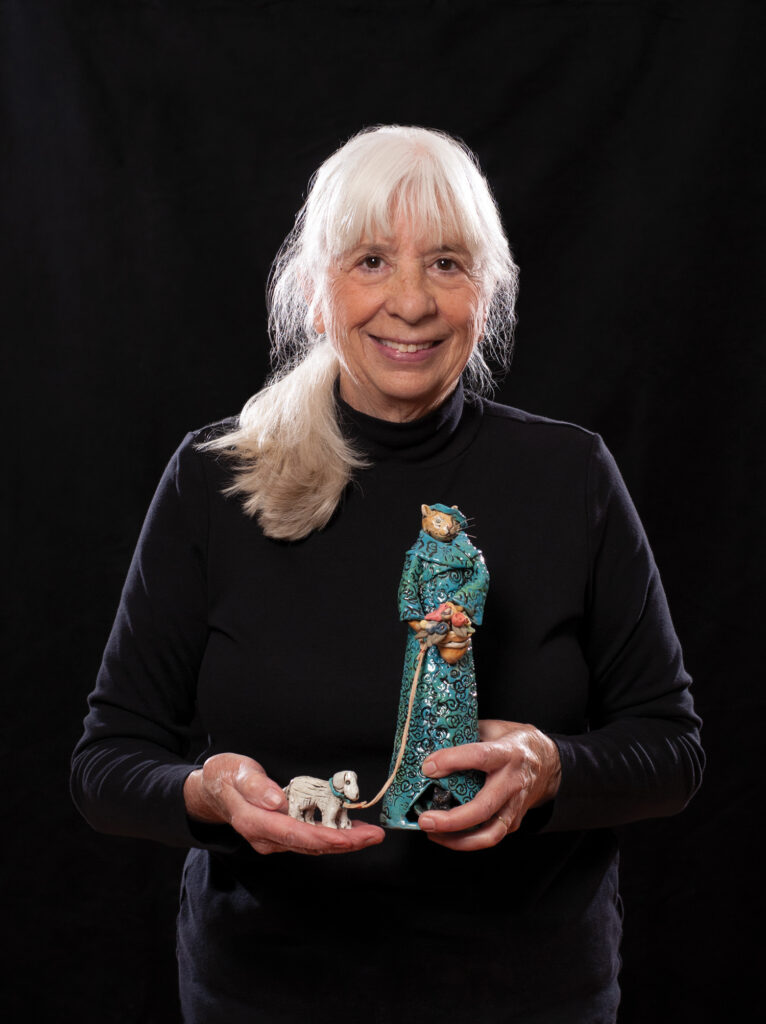
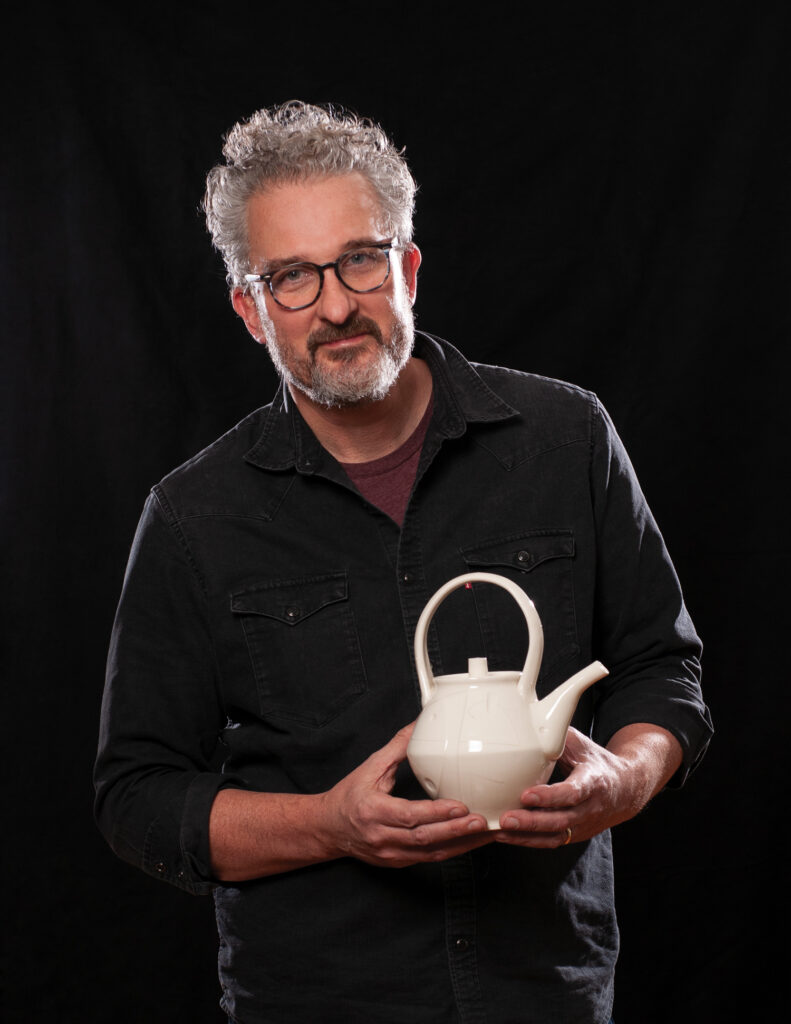
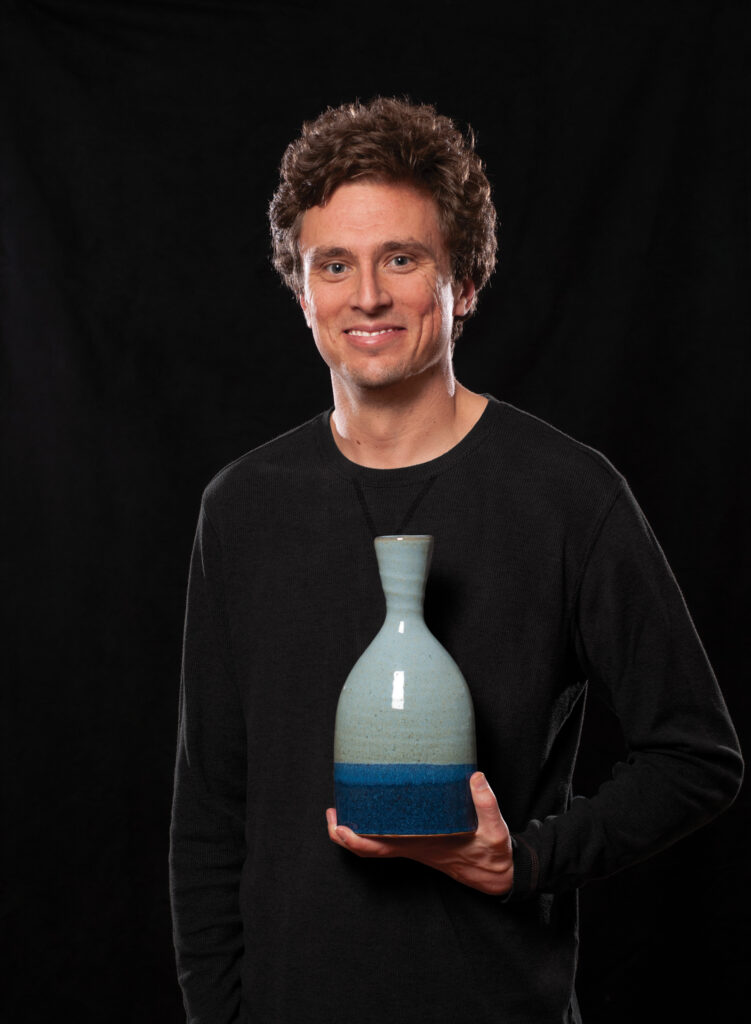
Great article about a great place ya’ll. I’d love to come by for a visit next time I’m in Wilmington.